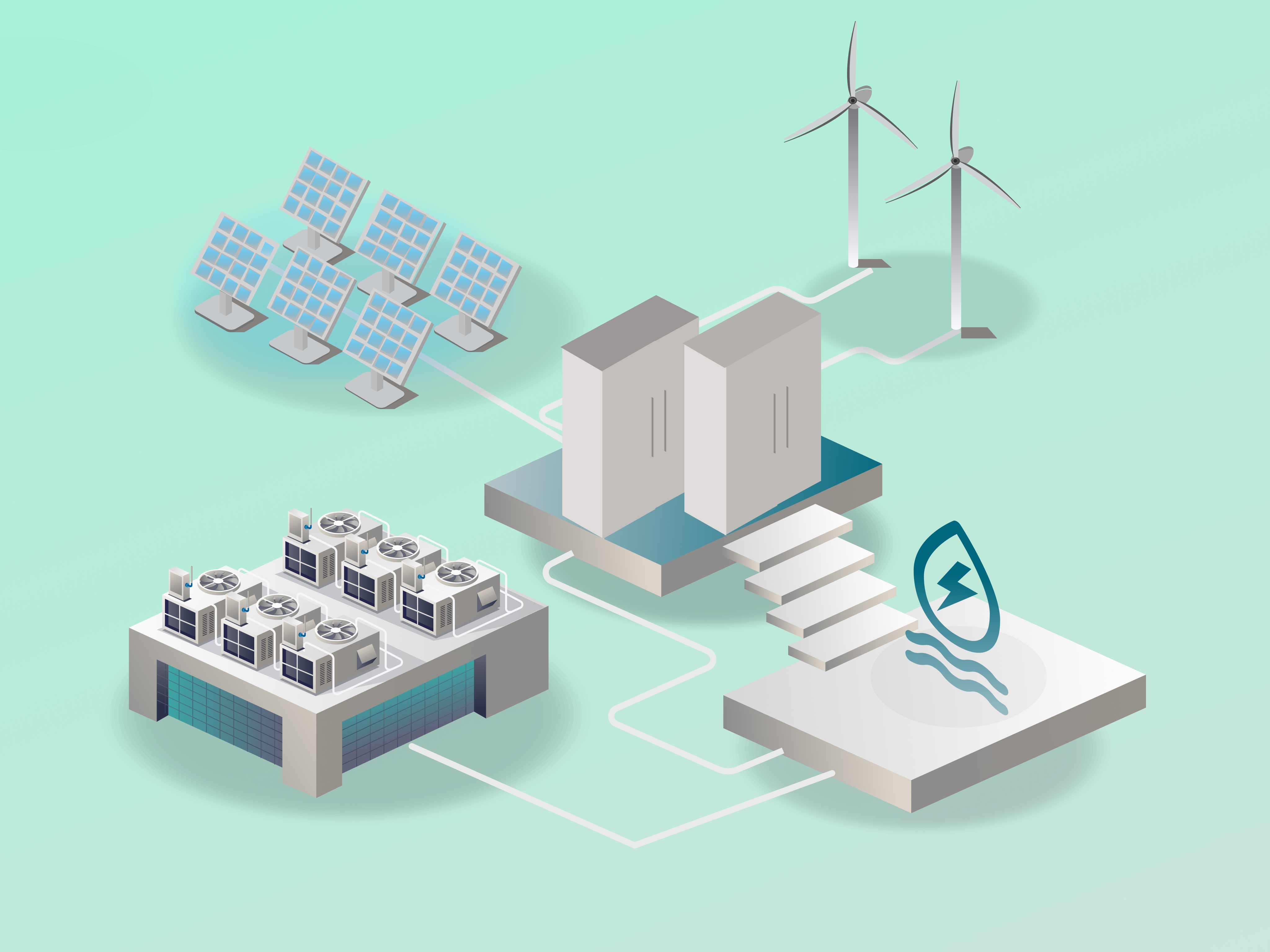What is a DER (Distributed Energy Resource)?

In a world grappling with the escalating climate crisis and the urgent need for energy independence, Distributed Energy Resources (DER) offer a beacon of hope. These small-scale, decentralized energy systems hold the key to unlocking a cleaner, more resilient, and sustainable energy future.
To better appreciate the benefits of DERs, let’s dig into what they are exactly and why they’re the next big step to more sustainable energy consumption for both the common person and business operators.
Defining a DER (Distributed Energy Resource)
DERs are dispersed, small-scale resources that supply and/or demand electricity from the electrical grid, which is the system that transports energy from producers to consumers. DERs have helped make the grid more flexible by expanding the number of resources that can supply energy to meet demand, as opposed to relying solely on the grid.
Historically, electricity was generated and delivered almost exclusively by fossil fuel-powered plants that would transmit energy across long distances to residential and commercial users.
With DERs, electricity can be generated and managed right where it is consumed.
One familiar example of a DER is solar energy. Solar energy is a more distributed energy resource. It’s installed on millions of homes and commercial buildings rather than in one central location. It’s an energy resource because it has the capacity to generate electricity that can be used by the location as an alternative to fossil fuel plants.
How DERs benefit the electrical grid
With their energy generation and management capabilities, DERs are able to provide an alternative source of energy when the grid is overloaded. In turn, this improves grid flexibility and reliability.
For example:
Energy consumers who have solar panels installed can use energy generated and stored by these panels rather than from the grid. This is especially useful when demand for electricity on the main power grid is high. This demonstrates how owners of DERs can help alleviate grid stress.
In conclusion, when people use DERs at scale, they alleviate the overall strain put on the grid—reducing the chances of power interruptions.
Energy-consuming equipment as DERs
The above example clearly illustrates how energy-producing equipment, such as solar panels, can act as DERs that support the main power grid. Devices that consume energy, on the other hand, can also act as DERs and improve grid resiliency—so long as usage patterns are shifted to offset periods of high demand.
To put into perspective, consider this scenario:
Imagine that all dishwasher owners would run their appliances during the early evening. During this time, overall grid stress is at its peak height.
If this group were to collectively use their dishwashers overnight instead—when the overall grid stress is much lower—they would achieve a cumulative effect that significantly reduces peak energy demand.
This shows how energy-consuming equipment can behave as DERs if controlled in a coordinated manner.
Cooling equipment as DERs
Like dishwashers, commercial cooling equipment—such as HVAC and Refrigeration—can be controlled to help offset grid stress. The impact of shifting the usage of a single piece of equipment from high-demand hours to lower-demand hours may be small.
However, strong results can be accomplished with a network of thousands of pieces of equipment—all controlled in a remote, orchestrated, and automated environment to optimize cooling cycles against grid stress patterns.
In light of the impact that a network of energy-consuming DERs can have, there has been substantial investment in the development of solutions that connect and control widely dispersed DERs.
One such example can be seen in the GlacierGrid, which utilizes cooling equipment, such as refrigeration units and HVAC, as a resource to support grid resiliency.
GlacierGrid—smart and sustainable energy management made profitable
While supporting grid reliability, GlacierGrid ensures inventory safety and environmental comfort. It does this by keeping temperatures within optimal ranges set by users while optimizing and reducing your business’s energy consumption and electricity bill.
Cut your costs without cutting corners—book a demo now!







